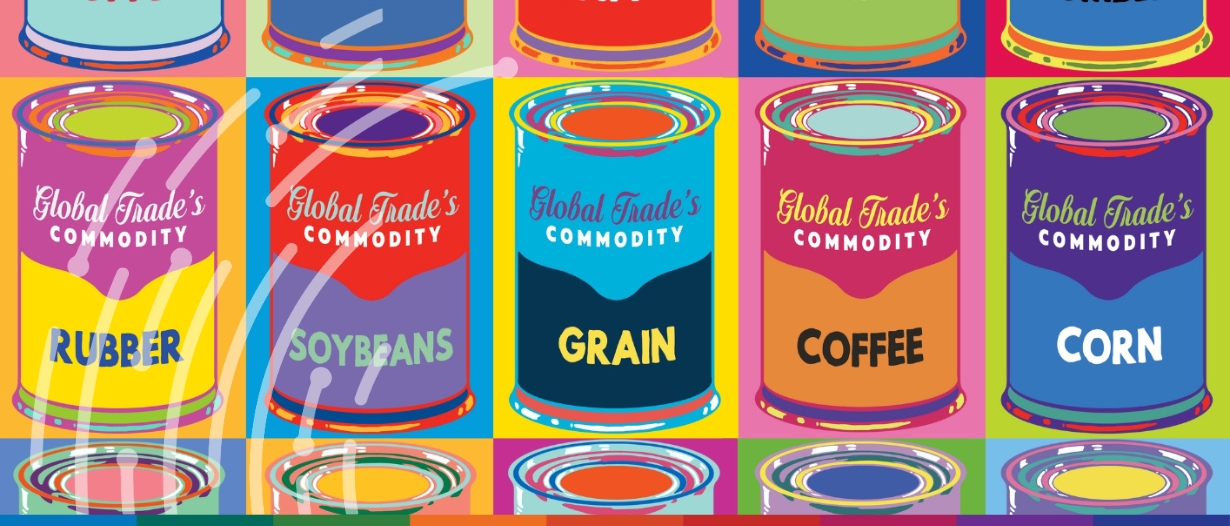Commodity trading and finance surround all of us at every moment of the day. From the coffee beans used in our morning coffee to the precious metals used in the smartphones that power our newsfeeds to the food used to cook dinner at night.
All of these activities are impacted by the physical trading and financing of the commodities that are instrumental to our everyday lives.
However, commodities are intricately tied to external influences throughout the world.
The very news that we read on our smartphones is the reason why the bag of coffee beans might have gone up by 10%, or why a new pair of shoes has increased beyond your budget.
Much like the world over the past 12 months, the commodity market has consistently experienced ups and downs.
Rice Commodity Prices

Source: Trading Economics
Sugar Commodity Prices

Source: Trading Economics
The global commodities market stands at a crossroads, marked by heightened volatility and transformative shifts. The repercussions of geopolitical instability, fluctuating trade policies, and the persistent threat of climate change cast long shadows over the trading landscape.
Yet, within this volatility lies the very real presence of opportunities. Collaboration across all global industries, innovations in trade finance, advancements in sustainable practices, and the digital overhaul of traditional trading mechanisms all give reason for optimism as we head deeper into 2024.
Not just commodities: What is going on with the trade industry in 2024?
Entering January, TFG wanted to catch up with global industry leaders to get an insight into the international trade temperature. We reached out to 20 experts and asked them their views on 2024.
Just like the commodity market in 2023 and the start of 2024, the predominant theme was uncertainty.
The majority of experts that we spoke to expressed concern about the changing regulatory landscape and believed that the infamous $2.5 trillion trade finance gap will increase over the next 12 months.
But the outlooks weren’t all negative. There was a general consensus that corporate defaults would fall in 2024, and there was palpable optimism that trade technology would help businesses address KYC issues and help streamline cross-border transactions.
Of course, sustainability is on the minds of everyone, but most experts seemed confident that the industry has started to plan, or implement, ESG strategies.
Resilience in the Face of Adversity
A key takeaway from 2023 and the early weeks of 2024 is resiliency. Both existing examples of resiliency and the knowledge that we need to make our industry more resilient.
This idea is not just about surviving; it’s about thriving. Leveraging adversity to create innovation, enhance efficiency, and strengthen global networks.
An obvious example of the necessity of building resilience is the issues with Supply Chains over the past three years.
Global trade has been significantly impacted by the three major events (with many smaller obstructions) since 2020. COVID-19 halted the flow of goods globally, the Ever Given blocked the Suez Canal, and now, the Red Sea military action is creating major disruptions.
While these events can be viewed as stains on the global supply chain, they can also foster future innovation and collaboration.
Speeding up the transition
These challenges have already led to discussions, and use cases, on transitioning to a more sustainable and resilient future in multiple areas.
Countries are beginning to diversify their production capabilities and export profiles away from oil by using both incentives and legal initiatives. The new strategies are encouraging the private sector to create and build green products and partnerships.
Behind all of these initiatives is the growing industry of payments. Commodities, sustainable projects and increasing global markets require a functioning payment industry, which needs constant innovation and development.
Companies are experimenting more and more with embedded payments and Buy Now, Pay Later (BNPL), hoping to ease the process for the end users.
B2B payments are also emerging as an important area for collaboration. While the transition to a more digital system is an important step, without an interoperable system, the process will remain littered with roadblocks.
This is why the ISO 20022 transition is a vital component to ensure the industry is on the same page.
Trade Finance Global has been at the forefront of discussing these topics with global leaders across all industries.
That’s why we can see the many links between commodity trading, credit tightening, shipping mayhem and payment regulations and why our coffee beans might be an extra £1. Hopefully after this magazine, you can make these connections as well.
As always, TFG wants to thank all of our sponsors and writers for their support in making this publication possible.
























